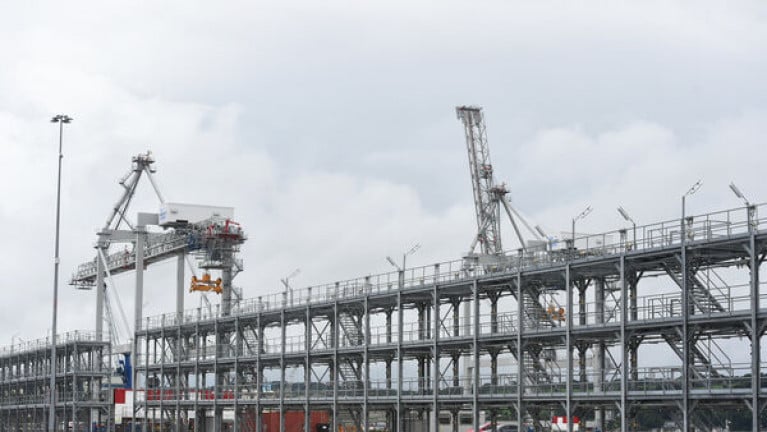Displaying items by tag: Nearing Completion
A massive development in the Port of Cork of a new container handling terminal at Ringaskiddy, is almost complete and, when operational, will future-proof the transit of imports and exports for Ireland.
Work on the €86m project - the biggest single investment ever made by the Port of Cork - started in 2018. It has been a huge undertaking, involving the dredging of 285,000 tonnes of silt and rock, the laying of 92,000 sq m of concrete and the development of 2kms of new roads at the 150-acre site.
A lot of the silt was buried at sea, close to Roche's Point, under an EPA licence, while most of the rock was ground up and used for infill at the site.
Jim Murphy, project and development engineer with the Port of Cork, explained that the new 360m-long quay (equipped with STS gantry cranes) had a 13m depth of water, meaning it is capable of handling the biggest container ships in the world.
“They are typically 300m long and 16 containers wide. The containers are 40ft long each and the Ringaskiddy terminal will be able to handle 280,000 of these containers every year,” Mr Murphy said.
 Port of Cork's new gantry cranes Photo: Bob Bateman
Port of Cork's new gantry cranes Photo: Bob Bateman
This is approximately 40,000 more containers than can be handled (upriver) at Tivoli, where operations will start to be phased out once Ringaskiddy is fully up and running.
Further Irish Examiner coverage of the port project here.





























































